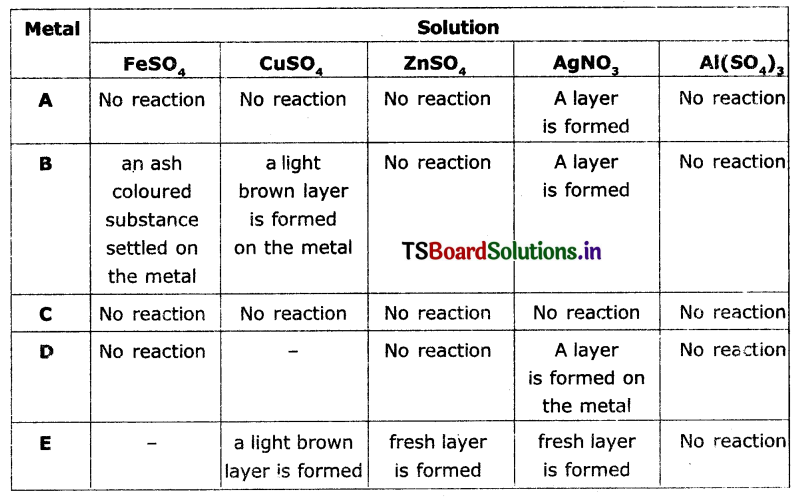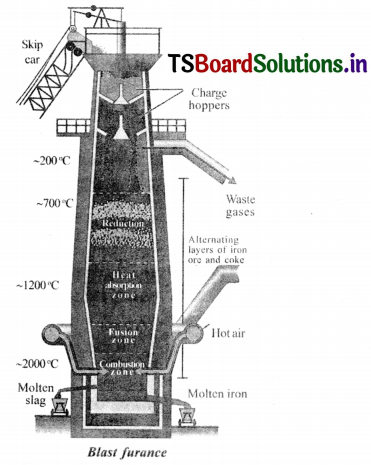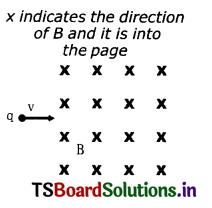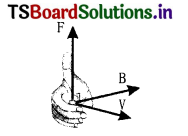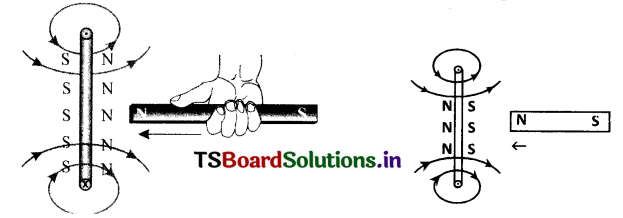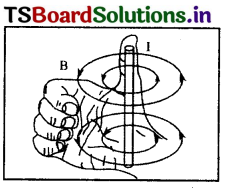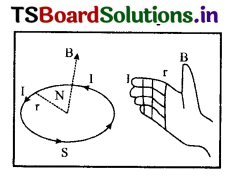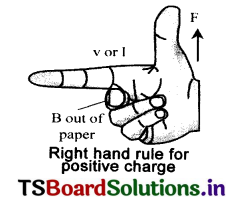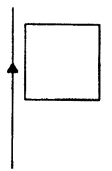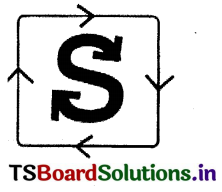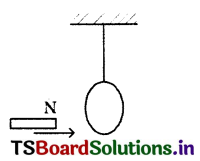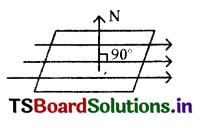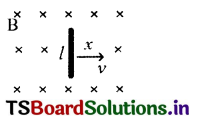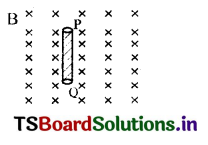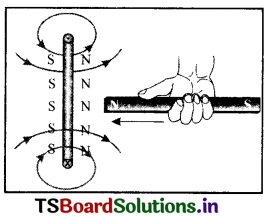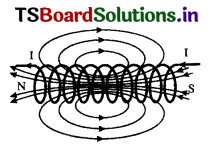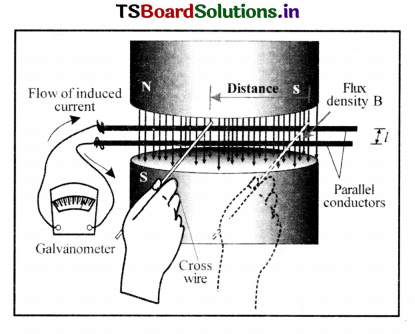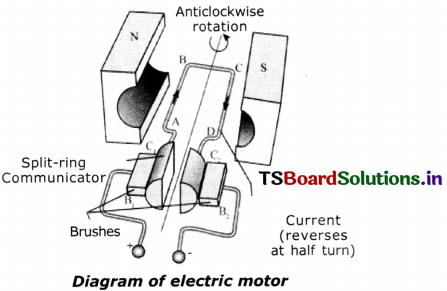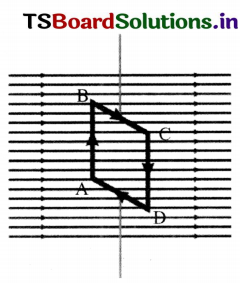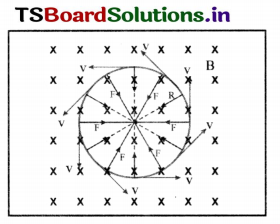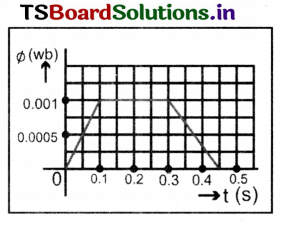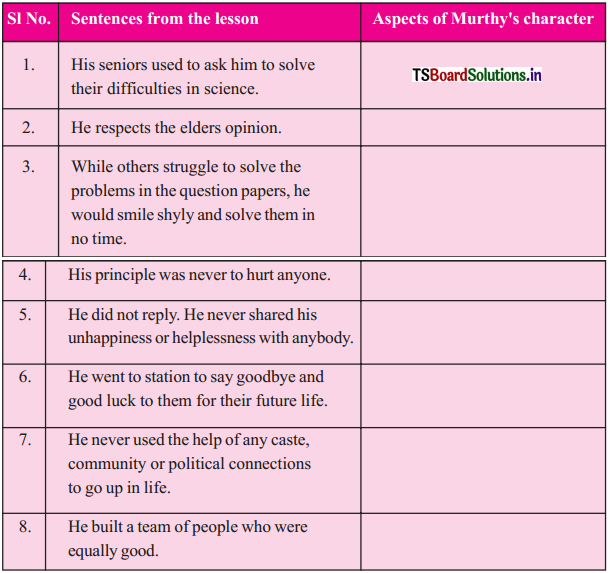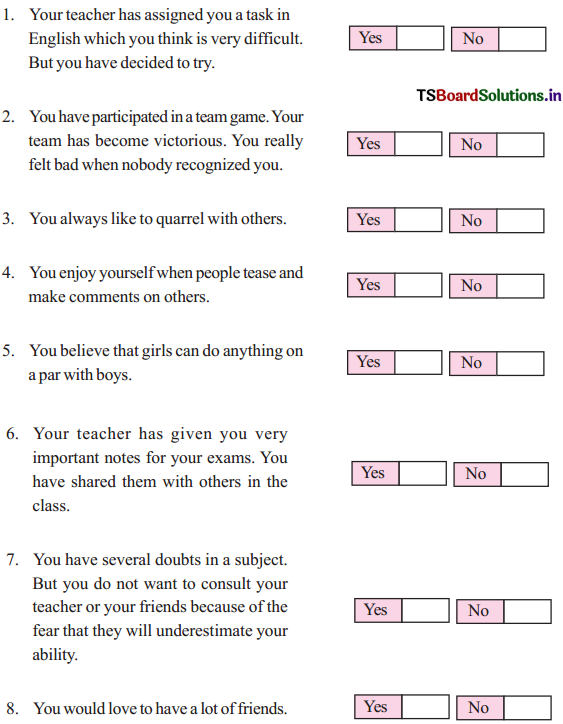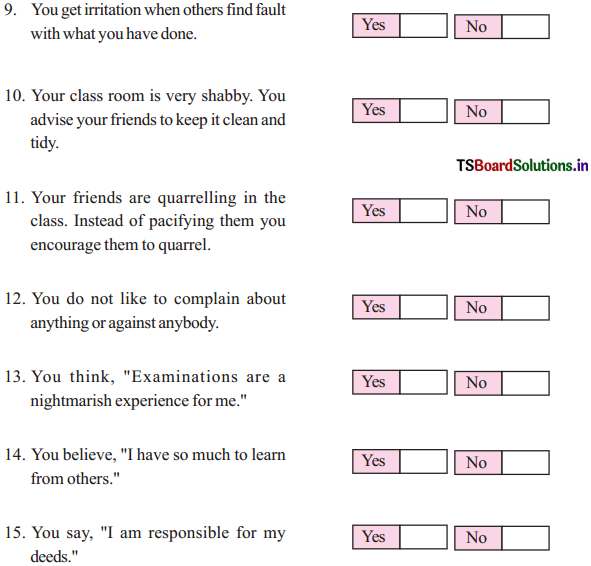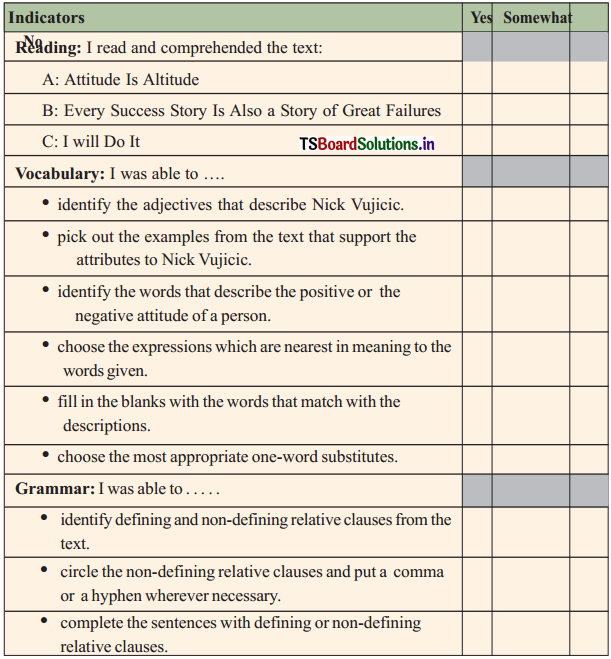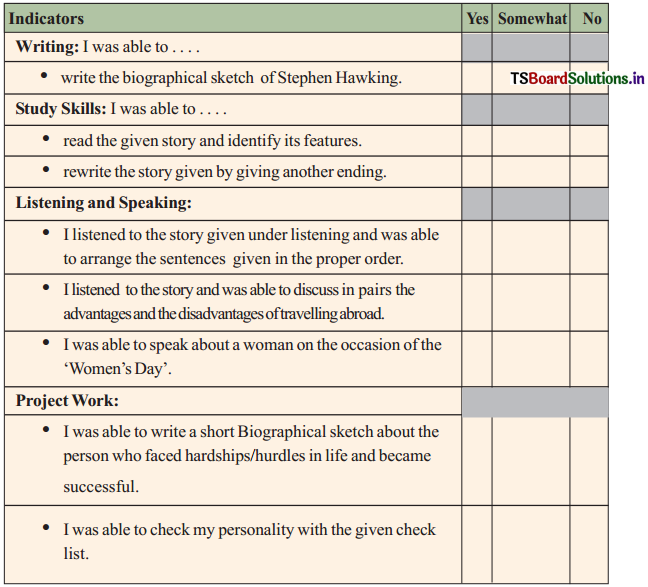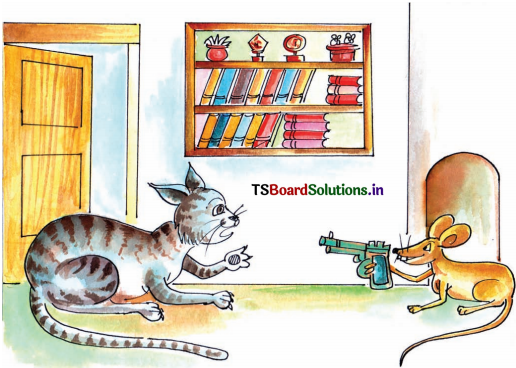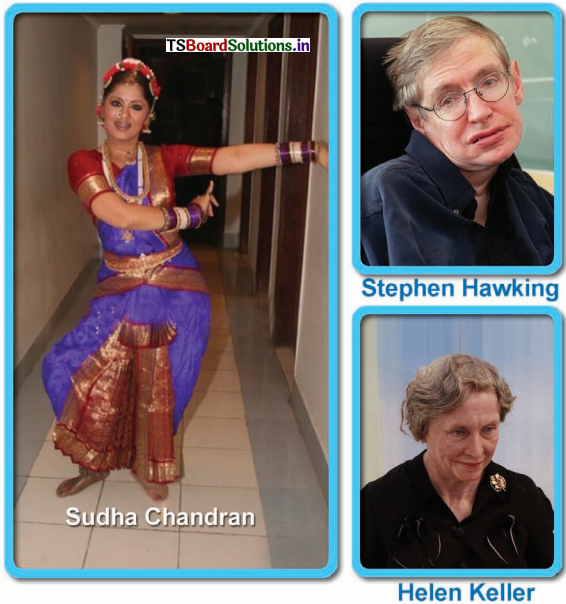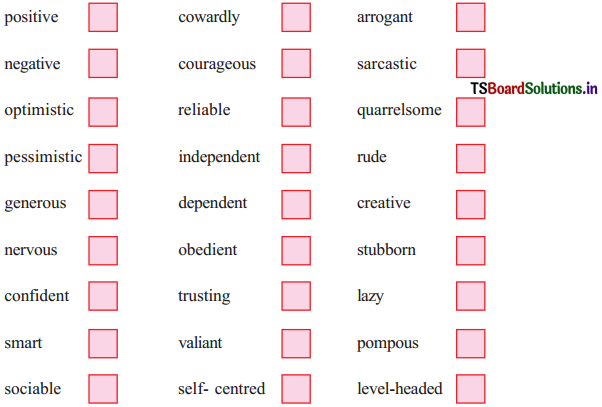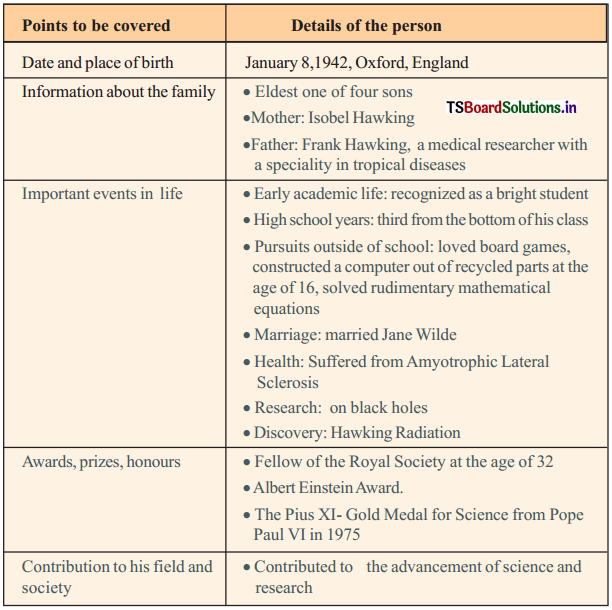Telangana SCERT TS 10th Class English Guide Pdf Unit 2B The Dear Departed Part 2 Textbook Questions and Answers.
TS 10th Class English Guide Unit 2B The Dear Departed Part 2
Comprehension:
I. Answer the following questions.
Question 1.
Justify the view that the husbands of Mrs. Slater and Mrs. Jordan are men with no individuality.
Answer:
Mr. Henry is the husband of Mrs. Slater and Mrs. Ben is the husband of Mrs. Jordan. Both the men are weak natured persons. We can say that they are men with no individuality. They never try to do anything on their own. They don’t even try to control their wives.
Mr. Henry is afraid of his wife Mrs. Slater and doesn’t dare to displease her. He is a puppet in her wife’s hands. We can say that he is a hen-pecked person. If she speaks a bit hard, he obeys her. He is not able to correct his greedy wife when she tries to pinch her father’s things.
In the same way Mr. Ben too is timid by nature. He can’t control his wife when she starts quarreling with her sister about keeping the old man. Mr. Ben is mean and unscrupulous person. He calls the old man, a ‘drunken old beggar’. Thus both Mr. Henry and Mr. Ben are men with no individuality.

Question 2.
Discuss the irony in the title ‘The Dear Departed’.
Answer:
Irony is the use of words to express something other than and especially the opposite of the literal meaning. The dramatist satirizes the degradation of moral values in the society. In this drama, the oldman is not dear to anyone but his property is dear to all. The title ‘The Dear Departed’ reveals just the opposite as the grandfather does not seem to be “dear” to his own daughters.
The dear departed is not Mr. Abel but his belongings and property. Both the sisters are more concerned about grabbing their father’s things. They fight with each other for keeping Mr. Abel, when he announces about changing his will. They fight selfishly and greedily even when their father is not dead.
Question 3.
List the arguments the two sisters gave to keep their father in their care.
Answer:
When Abel declares that he is going to change his will leaving all his property to whoever he is living with when he dies, Mrs. Slater and Mrs. Jordan fight with each other to keep their father in their care. Mrs. Jordan tells her father that it is quite time he comes to live with them again and they will make him very comfortable if he comes.
But Mrs. Slater argues that he has not been with them as long as he was with the Jordans. Mrs. Jordan replies that she does not think their father will fancy living on with the Slaters after their stealing his things. They even say sorry for what they have done. Thus, both the sisters argue to keep their father in their care.

Question 4.
How does the spat between oldman’s daughters lead to father discovering the truth?
Answer:
The spat happens between the two sisters when their father Abel asks Mrs. Slater why his bureau and clock are brought downstairs. Mrs. Jordan understands that her sister tries to steal those things before their arrival. This leads to a quarrel between the two sisters.
Mrs. Jordan tells her father that Mr. and Mrs. Slater have shifted the bureau and the clock from his room to the sitting room because they think he is dead. They have shifted the things so as Mrs. Jordan can’t lay a claim on them. After discovering the truth, Abel becomes angry because he feels that’his daughters don’t even wait till his funeral and have tried to divide things between them.
Question 5.
List the comic elements in the play ‘The Dear Departed’.
Answer:
There are many comic elements in the play ‘The Dear Departed’. All the elements in this play are sarcastic.
Comedy Elements in the Play:
a. Instructions of Mrs. Slater to her daughter, Victoria to change her dress.
b. The way the Slaters stole the things of the grandfather.
c. The attitude of the two sisters over looking after their father.
d. The behaviour of the two husbands without individuality.
e. The Jordans interest in taking tea, but not in seeing the dead body of the grandfather.
f. The idea of preparing a list of assets to distribute them evenly between the two families before the funeral.
g. The spat between the two sisters.
h. The arguments of the two sisters to keep their father in their care.
i. The decision of grandfather to have a remarriage in old age.

Question 6.
In what way is the play “The Dear Departed” a commentary on the hollowness of human relationships’
Answer:
“The Dear Departed” shows the hollow relations between two daughters and their aged father. The play reveals the breaking of human relationships in the modern world. It reveals the pathetic condition of the elderly and how they are ill own treated and neglected by their own children.
It shows us the degradation of moral values in respect and care within the members of the family itself. Mr. Abel Merryweather, the father of both the sisters becomes a kind of burden for them. Both the sisters are greedy, unscrupulous, selfish and mean.
They have waited for their father’s death. They never love him. The father is not dear to their daughters. They only care for his belongings. The two sisters fight with each other for the old man’s things. Thus the play ¡s a commentary on the hollowness of human relationships.
Question 7.
What are the three things that the father plans to do on Monday next? What effect does it have on his daughters?
Answer:
The three things that the father plans to do on Monday next are:
a) He will go to the lawyer and alter his will.
b) He will go to the insurance office and pay his premium.
c) He will go to St. Philips Church and get married to Mrs. John Shorrocks, the keeper of the ‘Ring-o-Bells’.
His daughters are filled with consternation when they know about their father’s decision of marrying a woman at that age. They are angry to know about his changing the will and feel that he is out of senses. They become speechless.
Question 8.
What do you think about both the sisters Mrs. Slater and Mrs. Jordan?
Answer:
Both the sisters are greedy, mean, unscrupulous and selfish. They don’t have any concern for their father. They always want to get rid of him. They care for only their father’s things. Mrs. Slater grabs his bureau, slippers and clock thinking that he is dead, before her sister’s arrival.
Question 9.
Who does grandfather decide to marry and why?
Answer:
Grandfather decides to marry Mrs. John Shorrocks, the keeper of ‘Ring-o-Bells’. He wants to teach his greedy and selfish daughters a lesson. He no longer trusts them. So, he decides to get married to Mrs. John Shorrocks.

Question 10.
Why does Mr. Abel decide to make a new will? What effect does it have on his daughters?
Answer:
Mr. Abel decides to make a new will as he realizes that his daughters not at all love him and therefore they don’t deserve his assets too. He doesn’t want to give a penny to either of his daughters. He wants to give his wealth to whoever he is living with when he dies. His daughters feel that he is out of senses. They are shocked and speechless.
II. Arrange the following sentences in sequence so that a continous narrative of the story of ‘The Dear Departed’ could be made.
1) One day Mrs. Slater felt that Abel Merryweather had died.
2) Suddenly Victoria came into the room telling that grandfather was moving.
3) The Slaters and the Jordans wanted to ascertain if Abel Merryweather had paid his insurance premium.
4) Abel Merryweather found fault with the two daughters and wanted to change his will.
5) Before the arrival of the Jordans, the Slaters had pinched Abel’s bureau and clock.
6) Victoria was sent to Abel Merryweather’s room to bring the key bunch of the bureau.
7) Abel Merryweather informed that he was going to marry Mrs. John Shorrocks.
8) The Slaters sent a telegram to the Jordans about the death of Abel Merryweather.
Answer:
The correct sequence.
1) One day Mrs. Slater felt that Abel Merryweather had died.
2) The Slaters sent a telegram to the Jordans about the death of Abel Merryweather.
3) Before the arrival of the Jordans, the Slaters had pinched Abel’s bureau and clock.
4) The Slaters and the Jordans wanted to ascertain if Abel Merryweather had paid his insurance premium.
5) Victoria was sent to Abel Merryweather’s room to bring the key bunch of the bureau.
6) Suddenly Victoria came into the room telling that grandfather was moving.
7) Abel Merryweather found fault with the two daughters and wanted to change his will.
8) Abel Merryweather informed that he was going to marry Mrs. John Shorrocks.

III. Here is a list of traits of a personality. Tick (✓) the traits that describe Mrs. Slater’s character.
a) Greedy
b) Overpowering
c) Honest
d) Sensitive
e) Dominating
f) Blunt
g) Straight talking
h) Humble
i) Impolite
j) Insensitive
Answer:
Evidence
a) Greedy : Mrs. Slater pinches her father’s bureau and clock before the arrival of her sister Mrs. Jordan.
b) Overpowering : Mrs. Slater rebukes Victoria for her wearing the colourful dress.
c) Dominating : Mrs. Slater’s dominating attitude towards her husband.
d) Blunt : Mrs. Slater says, “Be quiet, Elizabeth” to her sister.
e) Straight talking : When Victoria says that perhaps grandpa hasn’t paid his insurance premium, Mrs. Slater snubs her saying “He went onto”
f) Impolite : Henry(stupefied), I wouldn’t care to. Mrs. Slater. Don’t look so daft. Why not?
g) Insensitive : Victoria: that’s grandpa’s clock. Mrs. Slater: be quiet! It’s ours now.

IV. The following are the features of a one act play. Which of the following characteristics does the play ‘The Dear Departed’ have? Justify.
a) Minimal characters
b) Single setting or unity of place
c) One act with one or more scenes
d) Focus on one incident
e) Limited time
f) Twist ending
Answer:
The play “The Dear Departed” is characterized by all the above features.
a) Minimal characters :
Total number of characters in this play are six.
They are The grandfather, Mrs. Slater, Mr. Henry, Mrs. Jordan, Mr. Ben and Victoria. Hence, it consists of minimal number of characters.
b) Single setting or unity of place :
The total play occurs in Mrs. Slater’s house. Hence, the play has the feature of ‘Unity of place’.
c) One act with one or more scenes :
This play contains only one act and more than one scene. Hence, it has this feature.
d) Focus on one incident :
The play ‘The Dear Departed’ focuses on how the elderly are illtreated and deserted by their own children.
e) Limited time :
All the incidents in the play occurs within a limited time. Hence, this play has this feature.
f) Twist ending :
The old father announces that he is going to change his will and get married to Mrs. John Shorrocks, the news which shock them. Actually both the sisters don’t expect this. Hence, this play has the feature of “Twist ending”.

Vocabulary:
I. Compound Adjectives:
Read the following sentence from your text and notice the underlined words.
1. Herny and Mrs. Slater stagger in with a pretty, old-fashioned bureau.
2. Mrs. Slater rose briskly at length in a business-like tone.
3. His bright eyes twinkle under his heavy, reddish-gray eye brows.
4. I’ll not be quiet. Oh, I call it a double – faced behaviour.
The underlined words in the above four sentences are ‘compound adjectives’ in hyphenated form. A compound adjective is an adjective that comprises more than one word. Hyphens are used to link the words together to show that they constitute one adjective.
Make compound adjectives choosing one word from list ‘A’ and another word from list ‘B’ and fill in the blanks with them.
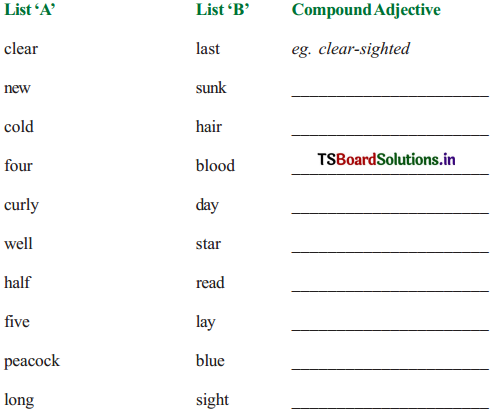
Answer:
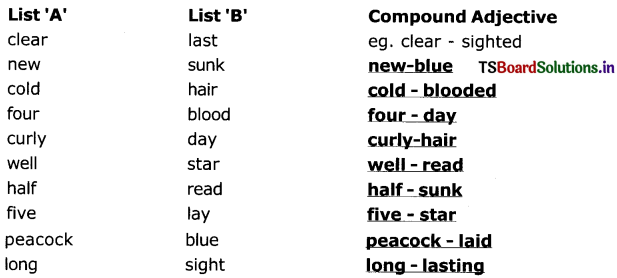

Question 1.
Sindhu is very ___________ about her choice.
Answer:
clear – sighted
Question 2.
The headmaster suggested a ___________ trip to Hyderabad.
Answer:
four – day
Question 3.
The ___________ girl who is under the tree is my sister.
Answer:
curly – headed
Question 4.
All the people were shocked at the sight of this ___________murder.
Answer:
cold – blooded
Question 5.
After the terrible tempest, the ___________ sailing boat was unusable.
Answer:
half – sunk
Question 6.
Prasad booked a room in a ___________ hotel for Srikanth.
Answer:
five – star
Question 7.
Every week, ___________ eggs are used by my mother to make some wonderful cakes.
Answer:
peacock-laid
Question 8.
This ___________ coat is too large for me.
Answer:
new – blue
Question 9.
It was a ___________ war between the English and the French.
Answer:
long – lasting
Question 10.
I like to correspond with this ___________ teacher. She speaks about interesting topics.
Answer:
well – read

II. Words often Confused:
Read the following sentences and notice the underlined words.
1. Mrs. Jordan said, ‘Except his gold watch. He promised that to our Jimmy, (except = excluding or apart from)
2. The Slaters did not accept the proposal of the Jordans, (accept = allow)
In the above sentences the words except and accept look and sound alike. But they have different meanings and spellings.
There are many such words in English that look or sound alike but have very different meanings. It’s easy to get confused with these.
A. Write the words that are likely to be confused with the words given. Find their meanings and use them in sentences of your own to show the difference in meaning.
Question 1.
alter – ________
Answer:
altar
Question 2.
principal – ________
Answer:
principle
Question 3.
gait – ________
Answer:
gate
Question 4.
canvas – ________
Answer:
canvass
Question 5.
check – ________
Answer:
cheque
Question 6.
ceiling – ________
Answer:
sealing
Question 7.
complement – ________
Answer:
compliment
Question 8.
stationary – ________
Answer:
stationery
Question 9.
all ready – ________
Answer:
already
Question 10.
advice – ________
Answer:
advise.

a) alter (v) : change
E.g: The plane altered its course.
b) altar (n) : table or raised flat – topped platform on which offerings are made to God.
E.g: The priest stood behind the altar
2. a) principal (n) : person with the highest authority in an educational organization.
E.g: Mr. Kishore is the principal of St. Ann’s Junior College.
b) principle (n) : guiding rule for personal behaviour.
E.g: Miss Ramya seems to have no principles at all.
3. a) gait (n) : manner of walking or running.
E.g: The old man is walking with unsteady gait.
b) gate (n) : movable barrier, usually on hinges, which closes an opening in a wall fence or hedge.
E.g: She is running away form the gate.
4. a) canvas (n) : strong coarse cloth.
E.g: He has painted a picture on canvas.
b) canvass (v) : go round an area asking for someone’s support.
E.g: Mr. Reddy has been canvassing for votes for the last two months.
5. a) check (n) : make sure of something by examining or investigating.
E.g: The officer has checked all the records thoroughly.
b) cheque : special printed form on which one writes an order to a bank to pay a sum of money.
E.g: The cheque issued by Prabhu was bounced and also he was imprisoned.
6. a) ceiling (n) : top inner surface of a room.
E.g: The inner ceiling of this room has been designed so well.
b) Sealing (n) : hunting seals.
E.g: A group of fishermen went on a sealing expedition.
7. a) complement (n) : thing that goes well or suitably with something else, or makes it complete.
E.g: Ghee makes an excellent complement to Payasam.
b) compliment(n) : expression of praise, admiration, approval etc.
E.g: She received compliments when she won the title.
8. a) stationary(adj) : not moving
E.g: The car collided with a stationary lorry from behind.
b) stationery (n) : writing materials
E.g: A new stationery shop has been opened recently.
9. a) all ready(phrase) : completely prepared.
E.g: We are all ready for our game against Australia.
b) already (adv) : before now.
E.g: I have already joined them.
10. a) advice (n) : opinion given about what to do or how to behave.
E.g: Let me give you a piece of advice.
b) advise (v) : give advice to somebody.
E.g: He advised me not to go there.

Some other words that are often misspelt and their meanings:
1. (a) affect (v) = to change or influence something or someone.
(b) effect (n) = the result of a change or influence.
2. (a) allowed (v) = permitted
(b) aloud (adv) = not silently.
3. (a) bear (v) = to stand something.
(b) dare (adj) = naked, without covering.
4. (a) board (n) = a flat piece of wood
(b) bored (adj) = not interested.
5. (a) break (v) = to damage something.
(b) brake (n) = stopping device on a vehicle
6. (a) coarse (adj) = rough
(b) course (n) = a class in which a subject is studied.
7. (a) dear (adj) = beloved
(b) deer (n) = an animal
8. (a) fair (adj) = of light complexion
(b) fare (n) = cost of ticket.
9. (a) flour (n) = powdered grain used for cooking.
(b) floor (n) = beautiful flooming part of a plant.
10. (a) groan (n) = low sound expressing displeasure.
(b) grown (v) = increased in amount, size, number or strength.
11. (a) hair (n) = a mass of fine thread like substance growing on head etc.
hare (n) = a rabbit.
12. (a) Heal (n) = to cure a disease.
(b) heel (n) = the back part of the foot
13. (a) hear (y) = to listen
(b) here (adv) = at this place
14. (a) hole(n) = roundopening
(b) whole (adj) = entire
15. (a) know (y) = to have knowledge
(b) no (adv) = expresses refusal
16. (a) loan (y) to allow someone to borrow
(b) lone (adj) the only one
17. (a) mail (n) = post
(b) male(adj) = man
18. (a) meat (n) = animal flesh
(b) meet (y) = to see someone.

B. Read the following paragraph. It contains errors in words often confused. Correct them and rewrite the paragraph replacing them with the right words.
It was one of those October daze when it was a pleasure to be alive. The sky was blew and the heir was cold and sharp with a cent of wet earth as the mourning sun warmed the chilled countryside. And then I caught site of a lonely be struggling to find the pollen of a final flour. Wear had he bean, this sad worker, doomed so soon to dye ? I marvelled at his energy as he climbed along so many bear stalks. Finding nothing, he flue on and disappeared from cite. I continued my walk to a country in where, sitting outside, I contentedly sipped my beer, musing all the wile on the mixed fortunes of life.
Answer:
It was one of those October days when it was a pleasure to be alive. The sky was blue and the air was cold and sharp with a scent of wet earth as the morning sun warmed the chilled countryside. And then I caught sight of a lonely bee struggling to find the pollen of a final flower. Where had he been, this sad worker, doomed so soon to die ? I marvelled at his energy as he climbed along so many bare stalks. Finding nothing, he flew on and disappeared from sight. I continued my walk to a country inn where, sitting outside, I contentedly sipped my beer, musing all the while on the mixed fortunes of life.

III. Idiomatic Expressions:
Here is a list of idioms and idiomatic expressions used in the play, ‘The Dear Departed’. Guess their meanings. Then look them up in a dictionary, note down their meanings and use them in your sentences.
1) get one’s own way
2) for ages
3) set foot
4) drive a hard bargain
5) get rid of
6) give way
7) at length
8) on purpose
9) took by surprise
10) at a loss
1. Get one’s own way : get or do what one wants, often inspite of opposition.
E.g: He always gets his own way in the end. for ages: a long period of time
2. for ages: a long period of time.
E.g: She has not seen her sister for ages, as she lives abroad
3. Set foot: to enter some place.
E.g: The owner ordered his servant never to set foot in his house.
4. driven a hard bargain: be uncompromising in making a deal
E.g: Mr. Raghav drives a hard bargain; be careful with him.
5. get rid of: become free of
E.g: Mrs. Aruna is a tough person; It’s time I got rid of her.
6. give way: Let oneself be overcome by something.
E.g: You shouldn’t give way to despair; it’s all common.
7. At length: after a long time, eventually
E.g: At length, the train arrived, two hours late.
8. on purpose: intentionally, not by accident
E.g: He sent her to their place on purpose.
9. took by surprise: happen unexpectedly, so as to shock somebody slightly.
E.g: His sudden entry took them all by surprise.
10. At a loss: perplexed, puzzled
E.g: Mr. Teja was terribly surprised; he was at a loss.

Some other ‘Idiomatic expressions’ and their meanings.
(a) at the drop of a hat = without any hesitation.
(b) barking up the wrong tree = looking in the wrong place.
(c) beat around the bush = avoid the main topic
(d) burn the midnight oil = to work late into the night
(e) caught between two stools = found it difficult to choose between two alternatives.
(f) cut comers = when something is done badly to save money.
(g) every cloud has a silver lining = be optimistic
(h) hit the nail on the head = do something exactly right.
(i) last straw = the final problem
(j) once in a blue moon = happens very rarely
(k) put wool over other people’s eyes = deceive
(l) see eye to eye = agree on something
(m) get ducks in a row = getting one’s things well organised
(n) get the axe = lose one’s job
(o) break the ice = some one who does or says something to make people relax in an uncomfortable situation.
(p) jack of all trades = a person who can do many different things but is not good at anyone of them.
(q) keep at arm’s length = don’t allow yourself to become too friendly with them.
(r) odds and ends = things of little value.
(s) pack something in = give up
(t) paper tiger = less powerful than one appears to be.

Grammar:
I. Read the following sentences from the play and notice the underlined words.
1. She’ll come fast enough after her share of what our father has left.
2. Mrs. Slater doesn’t have enough money to buy the bureau.
In both the sentences ‘enough’ is underlined. ‘Enough’ means ‘sufficient’.
In a sentences ‘enough’ is used after adjectives, adverbs or verbs as an adverb, and before nouns as a determiner.
A. Now decide whether ‘enough’ in the following sentences is used as an ‘adjective’ or an ‘adverb’.
Question 1.
This house is not big enough for me.
Answer:
‘Enough’ is used as an adverb.
Question 2.
We didn’t leave early enough.
Answer:
‘Enough’ is used as an adverb.
Question 3.
I was not trained enough for the game.
Answer:
‘Enough’ is used as an adverb.
Question 4.
Is there enough room for me?
Answer:
‘Enough’ is used as an adjective.
Question 5.
I do not have enough clothes for my journey.
Answer:
‘Enough’ is used as an adjective.

B. Complete the following sentences using ‘enough’ / ‘not enough’ and one of the words given in the list below.

Question 1.
Harish wants to be a great wrestler but he is ___________.
Answer:
not strong enough
Question 2.
I want to sit and watch T.V. but I just don’t have ___________.
Answer:
enough time
Question 3.
He tried to win the race but he came third as he was not ___________.
Answer:
fast enough
Question 4.
This bath is freezing. The water is ___________.
Answer:
not warm enough
Question 5.
We had to sleep on the floor as there were ___________.
Answer:
not enough beds
Question 6.
There is ___________ to make a cup of tea! What is wrong with the pipes?
Answer:
not enough water
Question 7.
If Sujatha does not have ___________, I can lend her.
Answer:
enough money
Question 8.
Vasavi is not ___________ to become a member of this club. She must be at least 18 years of age to join.
Answer:
old enough
Question 9.
Is this coffee ___________ for you? Would you like some more sugar?
Answer:
sweet enough
Question 10.
Do you think he has studied ___________ to pass the entrance exam?
Answer:
hard enough.

II. We generally use articles (a, an and the) before common nouns. But in some cases articles are not used before them. Read the following sentences from the play ‘The Dear Departed’ and notice the underlined common nouns.
1. He went out soon after breakfast to pay his insurance.
2. And when we’d finished dinner I thought I’d take up a bit of something on a tray.
In the above sentences the underlined common nouns ‘breakfast and dinner’ refer to the names of meals and food. In primary and general sense we don’t use articles before the words that refer to the names of meals and food i.e. breakfast, dinner, lunch, supper, pizza, fish fiy and omelette.
The following are the cases where ‘the’ is not used in the primary sense. (In a special or particular sense, ‘the’ is used before them.)
a) Before proper nouns (Rama, Sita, Mohan, Ramya, India, Ongole, Gandhi Nagar etc.)
b) Before abstract nouns and material nouns (honesty, beauty, poetry, iron, gold etc.)
c) Before the words ‘man, woman, society, heaven and hell’.
d) Before the names of diseases, games and sports, seasons, days, months. (fever, cricket, summer, April etc.)
e) Before the words ‘church, jail, prison, school, college, market, hospital, office, university, temple, mosque, bank, home and nursing home.
f) Before plural nouns (books, people, villages, pens etc.)
g) Before the words referring to relations. (mother, father, brother, sister, aunt etc.)
h) Before the names of languages. (Telugu, English, Hindi, Tamil, French etc.)
i) In certain expressions or phrases (catch fire, send word, set sail, set foot, at home, in hand, in debt, by car, at night, on demand, on earth, on foot, etc.)

Write the following paragraphs, inserting a, an and the where needed.
A. Horse knows when he is going to race. How does he know? His breakfast was scanty. (He is angry about that.) He does not have saddle on his back. He is being led, not ridden, to grandstand. He is led under grandstand into unusual, special stall. Horse is nervous. Sometimes he does not know what to do when starting gate flies open and track is before him. If he does not begin to run instantly, other horses are already ahead of him.
During race, when he sees another horse just ahead of him, he will try to pass him. Sometimes jockey holds him back to save his energy for last stretch. Eventually horse gets to run as fast as he can. Exercise boy, watching owner’s favourite jockey riding horse he has exercised day after day, says nothing. Secretly, he is planning for day when he will be jockey himself, and his horse will be first to cross finish line.
B. I have horse of my own. I call her Pretty Girl. She is intelligent animal, but she is not thoroughbred horse. I could never enter her in race, even if I wanted to. But I do not want to. She is companion, for my own pleasure. I took her swimming day or two ago.
Answers:
(A) A horse knows when he Is going to the race. How does he know? His breakfast was scanty. (He is angry about that.) He does not have a saddle on his back. He is being led, not ridden, to the grandstand. He is led under the grandstand into an unusual, special stall. The horse is nervous. Sometimes he does not know what to do when the starting gate flies open and track is before him. If he does not begin to run instantly, the other horses are already ahead of him.
During the race, when he sees another horse just ahead of him, he will try to pass him. Sometimes the jockey holds him back to save his energy for the last stretch. Eventually the horse gets to run as fast as he can. The exercise boy, watching the owner’s favourite jockey riding the horse he has exercised day after day, says nothing. Secretly, he is planning for the day when he will be a jockey himself, and his horse will be the first to cross the finish line.
(B) I have a horse of my own. I call him the Pretty Girl. She is an intelligent animal, but she is not a thoroughbred horse. I could never enter her in a race, even if I wanted to. But I do not want to. She is a companion, for my own pleasure. I took her swimming a day or two ago.

Fill in the blanks with the right words given In the brackets against each blanks.
It was winter. _______ (A/The) ponds were all frozen. At the court, Akbar asked Birbal, “Tell me Birbal, will a man ______ (do/does) anything for money?” Birbal replied, “Yes”. The emperor ordered him to prove it.
The next day Birbal ______ (come/came) to the court along with a poor Brahmin, who merely _____ (has/had) a penny left with him
Answer:
It was winter. THE ponds were all frozen. At the court, Akbar asked Birbal, “Tell me Birbal, will a man DO anything for money?” Birbal replied, “Yes”. The emperor ordered him to prove it.
The next day Birbal CAME to the court along with a poor Brahmin, who merely HAD a penny left with him.
III. Compound Prepositional Phrases:
Read the following sentences from the play ‘The Dear Departed’ and notice the underlined words.
1. Victoria dressed according to her mother’s instructions.
2. You both say that because of what I have told you about leaving my money.
3. It was here ìnsteadof in his room.
The underlined phrases are compound prepositional phrases. The following are some more important compound prepositional phrases. Their meanings are given in brackets.
along with (together with)
on account of (because of)
by means of (through the agency of)
apart from (separate from)
ahead of (earlier than somebody/something)
in front of (located before)
in place of (as a substitute for)
in spite of (disregarding the difficulty)
in case of (in the event of)
by way of (via)
due to (on account of)
for the sake of (for the good of)
in addition to (added to)
in accordance with (in agreement with)

A. Use the above compound prepositional phrases in sentences of your own.
1) along with:
I have drunk a cup of tea along with a cup of milk.
2) on account of:
On account of the bad weather, the departure of the train is delayed.
3) by means of:
They have tried to lift the heavy tree by means of a crane.
4) apart from:
Apart from the apples and the grapes, my mother bought the mangoes.
5) ahead of:
He reached the spot ahead of us.
6) in front of:
There is a temple in front of our school.
7) in place of:-
Dhoni was made the captain of India in the place of Tendulkar.
8) in spite of:-
In spite of heavy rains, they didn’t stop working.
9) in case of:-
In case of fire, ring the alarm bell.
10) by way of:-
They reached France by way of London.
11) due to:-
Their success was due to their hardwork.
12) for the sake of: –
He made this sacrifice for the sake of his friend.
13) in addition to:-
My father teaches Mathematics in addition to English.
14) in accordance with:-
She has started her work in accordance with your proposals.

B. Fill in each blank with the correct compound prepositional phrase from the options given under each sentence.
Question 1.
I finished my project work several days ________ the deadline.
a) instead of
b) ahead of
c) in spite of
Answer:
b) ahead of
Question 2.
Sravani goes to school ___________ yamuna diualy.
a) according to
b) in spite of
c) along with
Answer:
c) along with
Question 3.
My house stands ________ all the other houses in the street as it is big in size.
a) apart from
b) in accordance with
c) in addition to
Answer:
a) apart from
Question 4.
Madhu got a good job _______ his own abilities and skills.
a) in addition to
b) instead of
c) by means of
Answer:
c) by means of
Question 5.
She was unable to attend the party ________ her marriage engagement.
a) in spite of
b) in addition of
c) due to
Answer:
c) due to

Question 6.
________ fire, ring the alarm bell.
a) in spite of
b) in case of
c) in addition to
Answer:
b) in case of
Question 7.
Sriram continued his batting carefully ________ his team though he was hungry.
a) for the sake of
b) in addition to
c) in front of
Answer:
a) for the sake of
Question 8.
You should complete your B.Ed ________ your B.Sc to get a teacher job.
a) in addition to
b) according to
c) in spite of
Answer:
a) in addition to
Question 9.
The physical director of our school selected me my friend, Ganesh for tomorrow’s match.
a) in spite of
b) in place of
c) ahead of
Answer:
b) in place of
Question 10.
________ his poverty, he completed his Ph.D. in English.
a) in place of
b) for the sake of
c) in spite of
Answer:
c) in spite ofc

IV. The Simple Past and the Present Perfect:
Look at the following sentence from the lesson, ‘The Dear Departed’
They have stolen your clock and bureau.
Now compare this sentence with the following sentence.
They sneaked into your room like thieves in the night and stole them after you were dead.
Both the sentences express a past action. The first sentence is in the present perfect tense and the second sentence is in the simple past tense. In the first sentence the time or the place of action is not mentioned or specified. But in the second sentence the time or the place of action is mentioned.
You should use the present perfect tense when the time of action is not important or not specified and it shows the effect of the past action on the present. We should use the simple past tense when details about the time or place that an action occurred are given or specified.
Uses of the simple past tense:
1) The simple past is used to refer to past actions or events.
Examples:
(a) He passed his examination in 2013.
(b) I visited Delhi last month.
(c) Raju met his friend yesterday.
2) The simple past form can also be used to refer to the present time. This is a special use of the simple past form with verbs like want, wonder, hope, think to make an utterance more polite or tactful.
Examples:
(a) I wanted to discuss my proposal with you, madam.
(b) I wondered if I could discuss my proposal with you, sir.
(c) I thought of discussing my proposal with you, sir.
(d) I hoped to discuss my proposal with you, sir.
Other Uses of the Simple Past Form
1) After the conditional if to indicate tentativeness (hypothetical)
e.g. If I were the Prime Minister, I would provide free education at all levels.
2) After it’s time, would rather, wish
e.g. It’s 10 o’clock – it’s time you went to bed.
3) In reported speech
e.g. I asked you what the time was.

The present perfect:
The present perfect (has/have + Verb in the past participle form) refers to actions in the past which have no definite time reference. The present perfect in English is used in the following three situations:
1. The present perfect tense is often used to talk about past actions and events which are completely finished. However, instead of the simple past, the present perfect is used if the action has current relevance, that is, it is related to the speaker’s experience.
In this case even though the actions took place in the past, they are still with the speaker, as part of his/her experience and knowledge. This use of the present perfect is therefore also called the experiential use of the present perfect.
e.g. I have seen the Taj Mahal.
(Meaning: I know the Taj Mahal. It is still fresh in my memory.)
(Contrast: I saw the Taj Mahal two years ago.)
2. To indicate an action/situation which began in the past and which has continued up to the present moment, i.e. the moment when we are speaking, the present perfect tense is used.
e.g. I have lived in Hyderabad for 10 years.
(Meaning: I started living in Hyderabad 10 years ago and I am still living in Hyderabad.)
If you wish to state that you still continue to live in Hyderabad you should say, ‘ I have been living in Hyderabad for 10 years’.
This use of the present perfect is also known as its linking use as it links the past with the present.
3. The present perfect is also used to refer to past actions/events whose results are seen in the present, i.e. when there is evidence in the present for some action/event that happened in the past. Hence, it is also called the evidential use of the present perfect. This is called resultative past.
e.g. It has rained! (evidence- Look! The ground is wet.).

The following examples make the difference clear:
1. I saw the film, Gandhi last March. (Here the speaker is calling attention to the action of seeing and to the time when it happened.)
2. I have seen the film, Gandhi. (Here the speaker is not saying when he saw the film. He is calling attention to the fact that he is now a person with personal experience of the film or someone who can tell us about it.)
3. I cut my finger when I was sharpening the pencil. (Nothing is said about any result now.)
4. I have cut my finger (and it is bleeding now.)
The simple past is often used with adverbs of past time (e.g. yesterday, two months ago, in June, in 1965, during the war).
Sometimes it is also used to refer to present time or future time actions,
e.g., 1. Sir, may I come in? I wanted to talk to you.
2. If you left for Delhi tomorrow, when would you return?
The present perfect is never used with adverbs of past time. You should not say, for example, ‘She has gone to Hyderabad yesterday’. Say either ‘She went to Hyderabad yesterday’, if you are interested in the action and in the time when it happened, or ‘She has gone to Hyderabad’, if you wish to convey the idea that she is not in the town now.
The present perfect can be used with adverbs of present time (e.g. today, this morning, this week, this month).
Ex. I have seen Raju this week.
The present perfect is also used with just, recently, yet, already, never, ever, often, so far, etc.
Ex. They have just gone.
Ex. Hasn’t Anirudh left yet?
Read the following sentences .Complete the conversations with the appropriate forms of the verbs. Then say why you chose simple past/present perfect forms.

Question 1.
“Is your brother in?”
“No, he isn’t. He ________ (go) to Chennai.”
“When ________ he ________ (go) to Chennai?”
“Yesterday.”
Answer:
“Is your brother in?”
“No, he isn’t. He has gone to Chennai.”
“When did he go to Chennai?”
“Yesterday.”
Question 2.
“I ________ (lose) my pencil. ________ you ________ (see) it anywhere?”
“No, I ________. When ________ you last ________ (use) the pencil?”
“I ________ (use) it when I was in the class.”
“Perhaps you ________ (leave) it in the class.”
Answer:
“I have lost my pencil. Have you seen it anywhere?”
“No, I haven’t. When did you last use the pencil?”
“I have used it when I was in the class.”
“Perhaps you have left it in the class.”
Question 3.
A: ________ Madhu ________ (not arrive) yet?
B: No, he ________.
C: But he ________ (arrive) already!
B: ________ you ________ (talk) to him?
C: No, I ________. I merely ________ (see) him.
B: That cannot be Madhu. He may have been somebody else.
Answer:
A: Has Madhu not arrived yet?
B: No, he hasn’t yet.
C: But he has arrived already!
B: Did you talk to him?
C: No, I didn’t. I merely saw him.
B: That cannot be Madhu. He may have been somebody else.

Question 4.
A: ________ you ________ (call) me, mother?
B: Yes, I ________. ________ you ________ (see) my diary today?
I ________ (put) it on the table last night. I ________ (look) all over the house for it. But I ________ (not, find) it anywhere.
A: I ________ (see) it on the table this morning, if I remember right. Maybe father ________ (take) it with him by mistake.
Answer:
A: Did you call me, mother?
B: Yes, I have called you. Did you see my diary today?
I have put it on the table last night. I have looked all over the house for it. But I have not found it anywhere.
A: I saw it on the table this morning, if I remember right. Maybe father have taken it with him by mistake.
Question 5.
“Do you know Mrs. Geetha ?”
“Yes, I do. I ________ (know) her for nearly four years. It ________ (be) at a high school that I first ________ (see) her in 2009. I ________ (work) with her for several years. Recently we ________ (meet) at
the wedding of a mutual friend of us.”
Answer:
“Do you know Mrs. Geetha?”
“Yes, I do. I have known her for nearly four years. It was at a high school that I first saw her in 2009. I have worked with her for several years. Recently we have met at the wedding of a mutual friend of us.”

V. EDITING:
The following passage has some errors. Identify and rewrite them with necessary corrections.
Varanasi is locate on the north eastern part of India. Hindu pilgrims go to there to purify their souls. To the Hindus Varanasi is a holiest pilgrimage center to all. Thousands of pilgrims visit this wholly city every year.
As early as four o’clock at the morning the pilgrims are seen make their way to the famous bathing steps knowed as Gatz. From there they board row boats to the holy river ganges to take bath. In doing this the pilgrims believe that their sins would be wash away.
Answer:
Varanasi is located on the north eastern part of India. Hindu pilgrims go to there to purify their souls. To the Hindus, Varanasi is the holiest pilgrimage center to all. Thousands of pilgrims visit this wholly city every year.
As early as four o’clock at the morning the pilgrims are seen making their way to the famous bathing steps known as Gatz. From there they board row boats to the holy river the Ganges to take bath. In doing this the pilgrims believe that their sins would be washed away.

Writing:
I. Imagine that you are the grandfather in the play. Write a letter to your friend. Mr. Tattersall inviting him to your marriage at ‘Ring-o-Bells with Mrs. John Shorrocks. Don’t forget to say why you are going to get married at this age.
You can include the following
a) Time of wedding
b) Place of wedding
c) Details of the bride
d) Behaviour of the daughters
e) Reason for marrying at this age
f) Cordial invitation.
Flat No. 1125,
Happy Towers,
Road No. 55,
Manchester,
England.
My dear Tattersall,
I am keeping quite well and hope the same with you.
I wonder how you could keep quiet for such a long time without writing to me a letter. How are the things with you? Now, I am very glad to say that I am going to get married to Mrs. John Shorrocks at twelve o’clock on the next Monday (on the 20th August) at St. Philip’s church, Manchester. I shall be very glad to see you at the ceremony.
You can ask me why I have taken this hard decision at this old age. You know that I have been living by turns with my daughters Amelia and Elizabeth since the death of my wife. My daughters don’t have any love and affection for me. They are not concerned for my safety. Now, I have been with the Slater’s family. They are interested only in my assets. Last Saturday, I suffered from a bit of a headache and felt a little dazed. They all thought that I were dead and telegrammed my another daughter Elizabeth about it. Before they came, Amelia got shifted my bureau and my clock. Then Elizabeth and her husband came. My two daughters and their husbands planned to make a list of my things to be divided. They also discussed my paying the insurance premium. Both my daughters think that I am a kind of burden for them. I am not ‘dear’ to them anymore but my belongings are ‘dear’ to them. I have understood that they are greedy, selfish, unscrupulous and mean. Hence, I want to teach them a lesson and take this decision. I think you will realize my feelings.
I once again inivite you to attend my marriage ceremony without fail. I am awaiting you. My regards to your wife.
Your loving friend,
Abel Merryweather.
Address on the envolope
To
S. Tattersall,
H.No. 22-115/A,
Panama Square,
Road No. 26,
Washington,
United states of America.

II. Convert the play, ‘The Dear Departed’ into a story.
To adapt the story to your culture, you may make changes in the following :
a) The names of the characters
b) Description of costumes
c) Things stolen by the daughter
d) The names of the villages / towns the daughters lived in
Answer:
Mr. Prabhakar, an old man is the father of his two daughters Amala and Vimala. Amala’s husband is Rambabu and Vimala’s husband is Sridhar. Mr. Prabhakar is a widower and since the death of his wife, he has been living by turns with his daughters.
Now, he is with Amala’s family in Guntur. One morning he has suffered from a bit of headache and felt a little dazed. Amala thinks that he is dead and asks her husband to send a telegram to her sister Vimala. She asks her daughter, Sushma to wear black dress before her aunt Vimala and uncle Sridhar come.
Mrs. Amala is greedy and selfish. She wants to grab her father’s things. She asks her husband to wear her father’s new shoes so that those could be theirs. Then she wants to pinch the oldman’s gold chain and his big iron-safe. At first her husband doesn’t agree but finally agrees. Both of them bring the iron-safe down stairs. She wears her father’s gold chain.
Their daughter Sushma asks them if they are pinching the grandpa’s things. Rambabu is really shocked to hear this question from their daughter. Then Mrs. Vimala and Mr. Sridhar come from their village, Bhattiprolu. Mrs. Vimala says that finally the old man is dead. Mrs. Amala asks them if they will go up and look at him but Mrs. Vimala prefers tea. They want to make a list of the grandpa’s bits of things.
Mrs. Vimala says that father has promised his gold ring for Ravi. Mrs. Amala is amazed to hear this. Then they talk about his insurance premium. Mrs. Amala asks Sushma to bring the bunch of keys from grandpa’s room. At first she doesn’t want to go into grandpa’s room as she comes to know he is dead.

Later she goes out reluctantly and returns after sometime very scared. She tells her mother that grandpa is getting up. They are transfixed with amazement and a few minutes later Mr. Prabhakar comes in. They can’t believe their eyes. He sees Vimala and her husband and asks them how they come there. Mrs. Amala pokes him with her hand to see if he is solid.
Mrs. Vimala asks him if he is well. Prabhakar sees his shoes being worn by Mr. Rambabu and says it is not good. Mrs. Amala snatches them from Rambabu and gives them to her father. He asks why they are in mourning dress. Sushma says that she is glad to see her grandpa alive. Mrs. Amala lies that Sridhar’s brother is dead. Then he invited them all to sit down and be jolly.
Mr. Prabhakar recollects something suddenly and asks them why they have shifted his iron-safe out of his bedroom. Mrs. Amala and her husband are speechless. Then he sees his gold chain worn by Mrs. Amala. Mrs. Vimala blames her sister for pinching their father’s things. The two sisters start quarrelling. Mrs. Vimala has told his father that Mrs. Amala and her husband have pinched his things thinking that he is dead.
Mr. Prabhakar comes to know the reality. He tells them that neither of them has any cause to feel proud about the way they have treated him. He tells them that he shall make a new will leaving all his assets to whoever he is living with when he dies. Both the sisters try to persuade him to keep with them but he says that it is a bit late. Then Prabhakar announces that he is going to do three things on the Monday next.
The first one is that he will go to the lawyer and change his will. The second one is that he will go to the insurance office and pay his premium. The third one is that he will go to Sri Anjaneya Swamy Temple, Kothapet and get married. They are all surprised with the news. He tells them that he will get married to Mrs. Bhanumathi, the owner of the ‘Durga Bhavan’. He invites all of them to attend the ceremony, ill.

Study skills:
Health is a major concern during old age. Maintaining health is very important for the elderly, particularly in rural areas, who must continue to work for a living even when they become aged. Good health is central to their ability to work, and support themselves and families. However, many poor rural elderly people have severe problems of health.
Here is the data collected in January 2013 by ‘Help Age India’, a research and development journal on common health problems of the rural elderly in Andhra Pradesh. The data is collected from 150 male and 150 female rural elderly people of above 60 years old.
Common Health Problems of the Rural Elderly in Andhra Pradesh
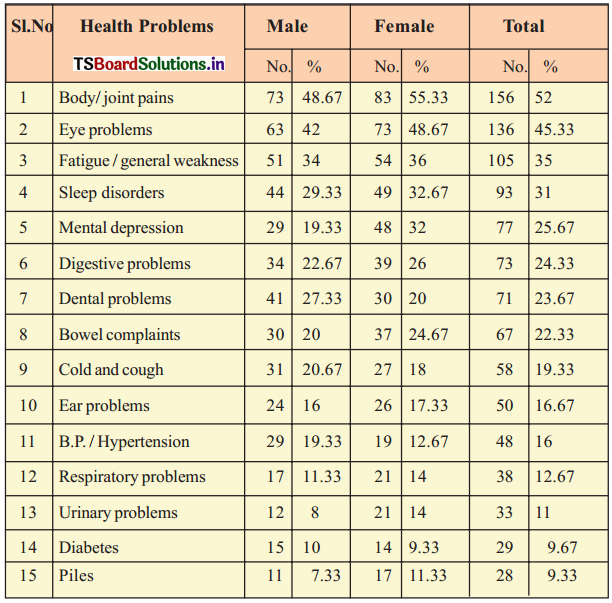
Read, understand and analyse the data given in the above table and write a report on it to present on the World Grandparents’ Day.
You should include the following points in your report :
Introduction
The type of diseases old people suffer from below 10%, between 10 – 20, 21 – 30, 31 – 40 and 41 – 50.
Which diseases have more or less effect on the health of the old people.
Answer:
REPORT
Dear friends,
At first I want to convey my greetings to all the grandparents on the occasion of the World Grandparent’s Day. Health is a major concern during old age. Maintaining the health is very important for the elderly, particularly in rural areas, who must continue to work fora living even when they become aged. Good health is essential to their ability to work, and support themselves and families. However, many rural elderly people have severe problems of health.
Now, we observe the data collected in January 2013 by ‘Help Age India’, a research and development journal on common health problems of the rural elderly in Andhra Pradesh. The above data is collected from 150 male and 150 female rural elderly people of above 60 years old.
There are as many as fifteen health problems faced by the elderly. Below 10% of the male elderly are suffering from piles and urinary problems. Between 10% and 20% of the males are suffering from diabetes, respiratory problems, hypertension, ear problems, bowel complaints and mental depression.
Between 21% and 30% of the males are suffering from cold and cough, dental problems, digestive problems and sleep disorders. Between 31% and 40% of the males are suffering from fatigue or general weakness. Between 40% and 50% of the males are suffering from eye problems and body/joint pains.

As far as the female elderly are concerned, below 10% of them are suffering from diabetes. Between 10% and 20% of the females are suffering from piles, urinary problems, respiratory problems, hypertension(B.P), ear problems, cold and cough and dental problems.
Between 21% and 30% of them are suffering from digestive problems and bowel complaints. Between 31% and 40% of the females are suffering from mental depression, sleep disorders and fatigue or general weakness. Between 41% and 50% of the females are suffering from eye problems and body/joint pains.
When we observe the health problems being faced by both the males and the females, below 10% of them are suffering form piles and diabetes. Between 10% and 20% of the elderly are suffering from urinary problems, respiratory problems, hypertension(B.P), ear problems and cold and cough.
Between 21% and 30% of them are suffering from bowel complaints, dental problems, digestive problems and mental depression. Between 31% and 40% of the elderly are suffering from sleep disorders and fatigue or general weakness. Between 41% and 50% of the elderly are suffering from eye problems and body / joint pains.
When we observe the data, the health problems such as body pains or joint pains, eye problems, fatigue/general weakness, sleep disorders, mental depression, digestive problems, dental problems, bowel complaints and cold and cough have more effect on the health of the old people.
The health problems such as ear problems, hypertension, respiratory problems, urinary problems, diabetes and piles have less effect on their health when we compare with the earlier ones. I wish all the rural elderly would lead a healthy life which is free from all the health problems.

Listening:
Listen to an interesting anecdote and say whether the following statements are true or false.
BUS 65
A woman was visiting Hyderabad for the first time. She wanted to see the Charminar. Unfortunately, she couldn’t find it, so she asked a police officer for directions.
“Excuse me, officer, how do I get to the Charminar?”
The officer replied, “Wait here at the bus stop for the number 65 bus. It’ll take you right there. “She thanked the officer and he drove off.
Three hours later the police officer returned to the same area and, sure enough, the woman was still waiting at the same bus stop. The officer got out of his car and said, “Excuse me, but to get to the Charminar, I said to wait here for the number 65 bus. That was three hours ago. Why are you still waiting?”
The woman replied, “Don’t worry, officer, it won’t be long now. The 56th bus just went by!”
Question 1.
The woman was a stranger to Hyderabad.
Answer:
TRUE
Question 2.
In the beginning of the incident, the woman was at the Charminar.
Answer:
False
Question 3.
The woman in this event might be a villager.
Answer:
True
Question 4.
The woman knows that the buses in city have numbers.
Answer:
False
Question 5.
The woman misunderstood the direction given by the police officer.
Answer:
True
Question 6.
The police officer gave a wrong direction.
Answer:
False

Oral Activity:
Work in groups . Tell your group any funny incident you may have witnessed / listened read.
What is the funny incident?
Where did it happen?
When did it happen?
What made you laugh?
Answer:
Dear friends,
Now I am going to tell you a funny incident which I have witnessed. We have a pet dog named Dolly. It comes into our house and moves along with us. One day, Dolly happened to see a mirror. He sat infront of the mirror and looked into it. There he found the image of him. But he thought that there was another dog in the mirror.
So, he started barking at it. The dog in the mirror too moved its mouth in the same way as Dolly did. Dolly thought that it was his enemy. He tried to scratch on the mirror with his paw. The dog in the mirror did the same. Dolly wanted to attack his opponent.
So, he went a few steps back and came running towards the mirror. He dashed against the mirror and it was broken. Dolly was very scared to see this and ran away screaming. I think this incident makes you all laugh.

The Dear Departed 2 Summary in English Summary
Abel Merryweather sees the Jordans and asks them how they come there. Abel thrusts his hand at Ben and he skips back smartly and retreats with Mrs. Jordan to a safe distance below the sofa. Mrs. Slater pokes him with her hand to see if he is solid.
Mrs. Jordan asks him if he is well. Abel sees his slippers being worn by Henry and says it is not good. Mrs. Slater snatches them from Henry and gives them to her father. He asks why they are in mourning dress. Victoria tells her grandpa that she is glad he is not dead.
Abel asks them who is dead as they are all in mourning. Mrs. Slater lies that Ben’s brother is dead. Then Abel says they have only been waiting for him to begin tea. He tells them to sit down and be jolly. Abel suddenly recollects something and asks them why they have shifted his bureau out of his bedroom. Mr. Henry and Mrs. Slater are speechless.
Then he realizes that his clock has also been shifted. Elizabeth blames her sister for stealing. The two sisters start quarrelling. When both his daughters argue, he asks what has been going on. Mrs. Jordan tells him that he is thought to be dead and Mrs. Slater and Henry has pinched his things.
Abel comes to know the reality. He has understood everything. He wonders that they don’t take long to start dividing his things between them. He tells them that neither of them has any cause to feel proud about the way they have treated him. He wants to teach them a lesson. He tells them that he shall make a new will leaving all his things to whoever he is living with when he dies.

Both the sisters try to persuade him to keep with them but he says that it is a bit late. Ben tells him that he has got to live with one of his daughters. Then Abel announces that he is going to do three things on Monday next. The first one is that he will go to the lawyer and change his will. The second one is that he will go to the insurance office and pay his premium and the third one is that he will go to St. Philip’s Church and get married.
They are all surprised to hear the news of his marriage. He tells them that he will get married to Mrs. John Shorrocks, the keeper of the ‘Ring-o-Bells’. He invites all of them to attend the ceremony. He thanks Mrs. Slater for she has brought his bureau downstairs as it will be handier to carry it across to the ‘Ring-o-Bells’ on Monday.
About the author:
William Stanley Houghton (1881-1913) was a famous English dramatist. He was one of the best of a group of realistic playwrights often called the Manchester School. In every play he sought to present an idea. He had a remarkable gift for dialogue that is evident in ‘The Dear Departed’. The Dear Departed was first produced in Manchester in 1908. Here Houghton satirizes the degradation of moral values in the British middle-class.

Glossary:
gingerly (adv) = in a careful way;
poke (v) = push;
what the devil (phr.) = old fashioned way of showing annoyance or displeasure; This phrase is always used in questions;
tomfoolerly (n) = too much foolish or silly behaviour;
what the dickens (id.) = (old-fashioned and informal) used in questions instead of ‘devil’ to show that you are annoyed or surprised;
vindictive whisper (n) = talking about someone in a harsh, hasty manner;
double-faced (adj) = hypocritical / deceitful / dishonest;
thumping (v) = hitting hard;
will (n) = legal document that says what is to happen to somebody’s property after his/her death;
fancy (v) = want/feel like;
consternation (n) = a worried, sad feeling;
Ring-o-bells (n) = the name of a restaurant;
handier (adj) = easier;
thrust (v) = to push something somewhere roughly;
skip (v) = move with quick steps and jumps;
retreat (v) = move back;
hearth (n) = the area of floor around a fire place in a house;
snatch (v) = to take something away from someone with a quick, often violent movement;
hold your tongue (phr) = to tell someone to stop talking;
chuckle (v) = to laugh quietly;
resume (v) = to start doing something again after stopping or being interrupted;
![]()
![]()
![]()
![]()
![]()
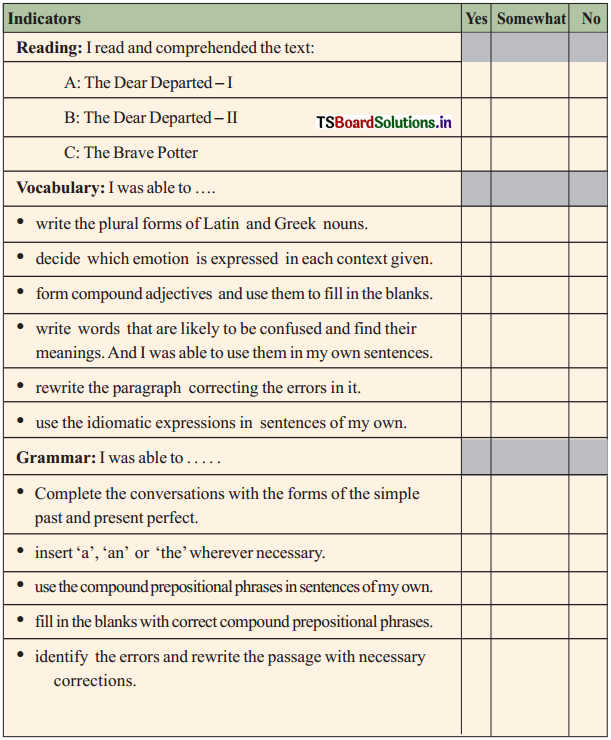
![]()
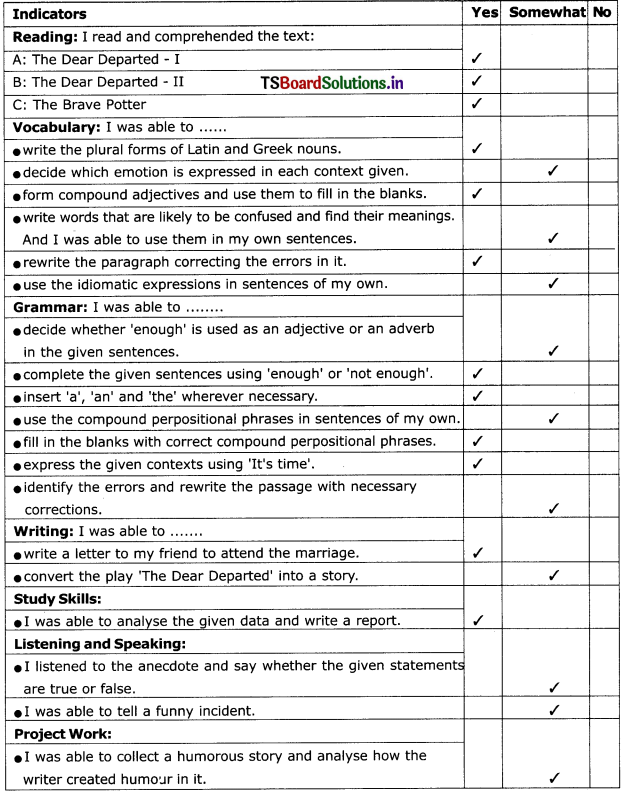
![]()
![]()
![]()

